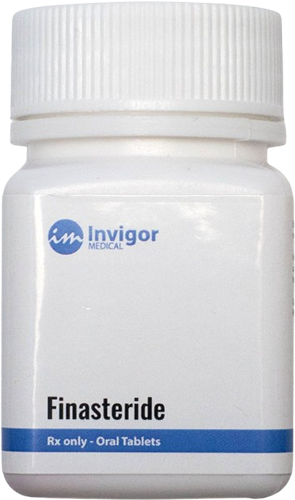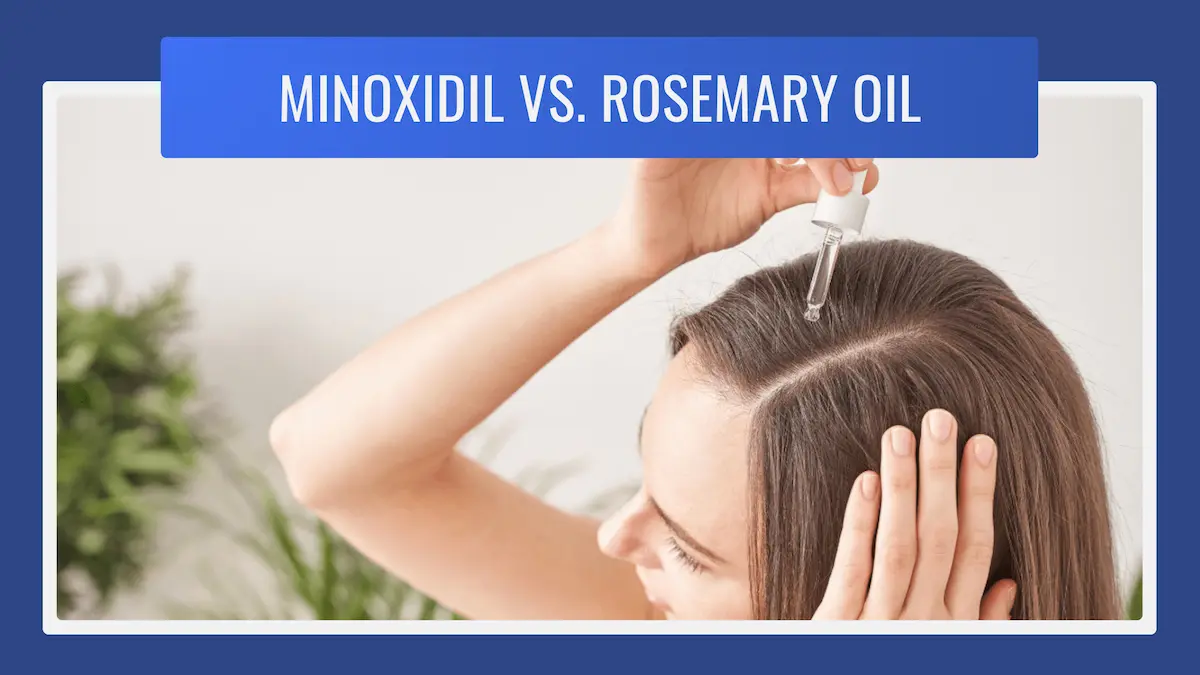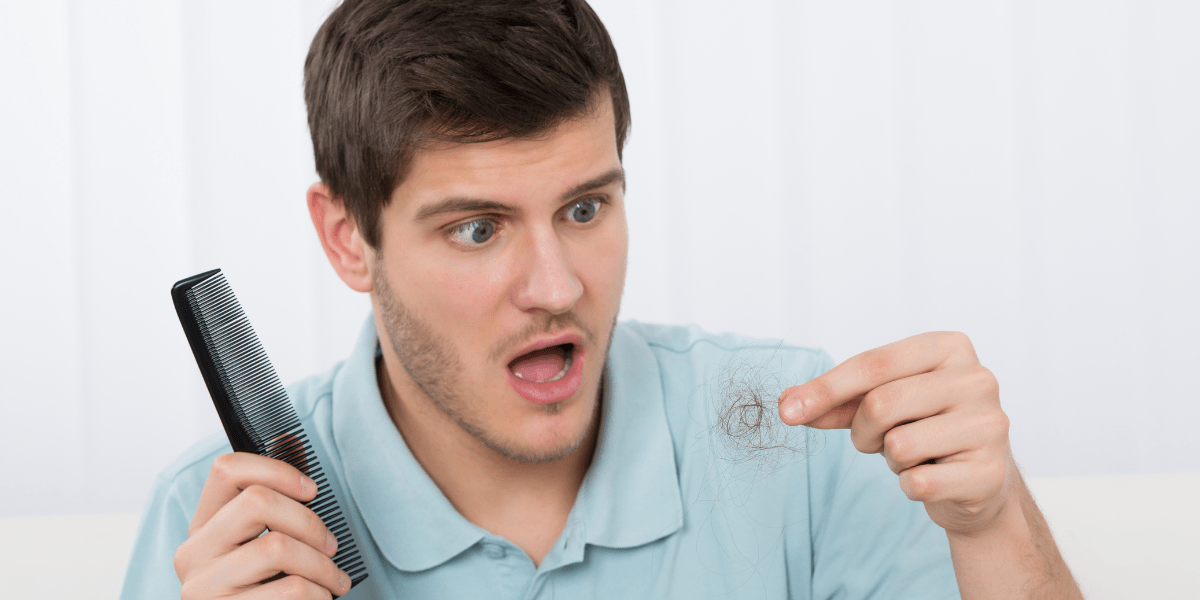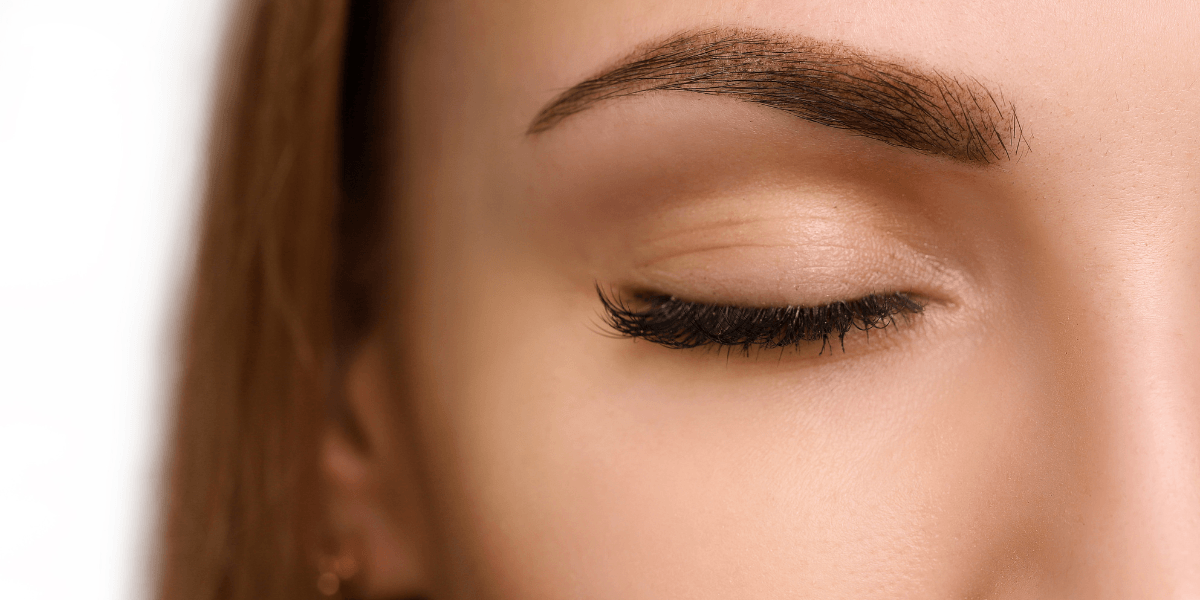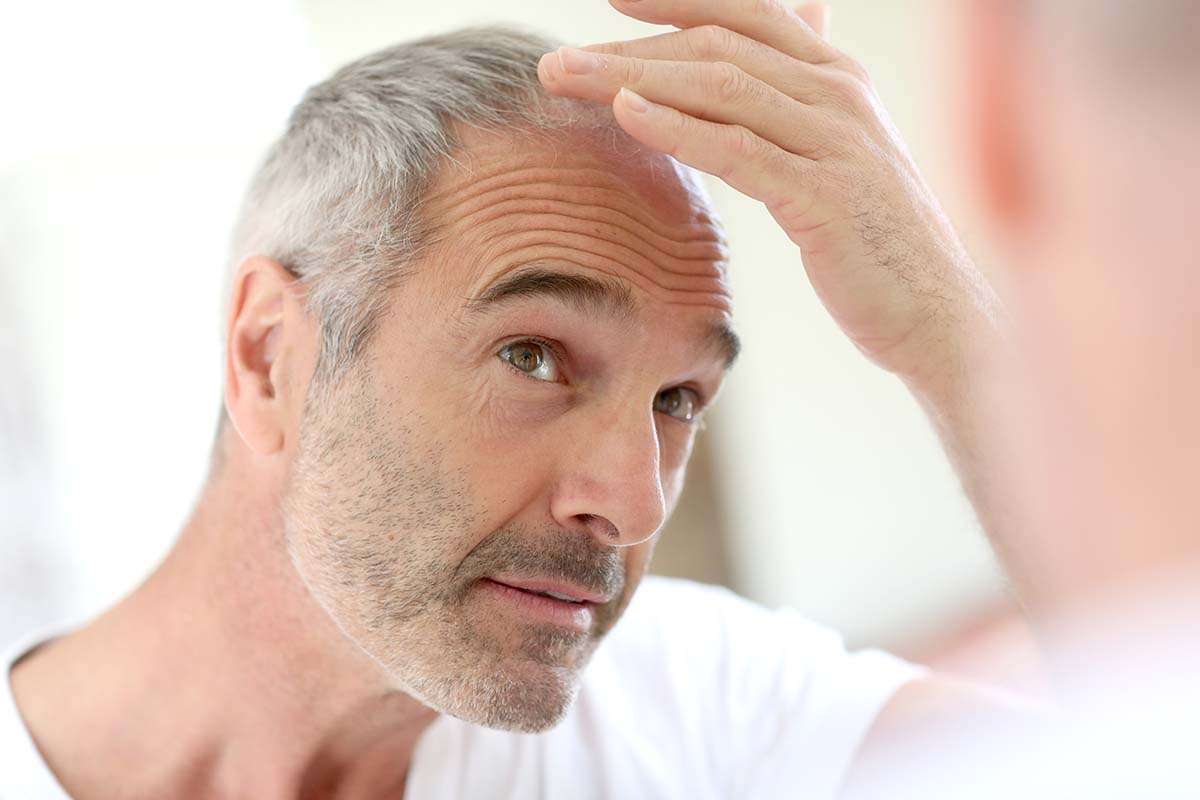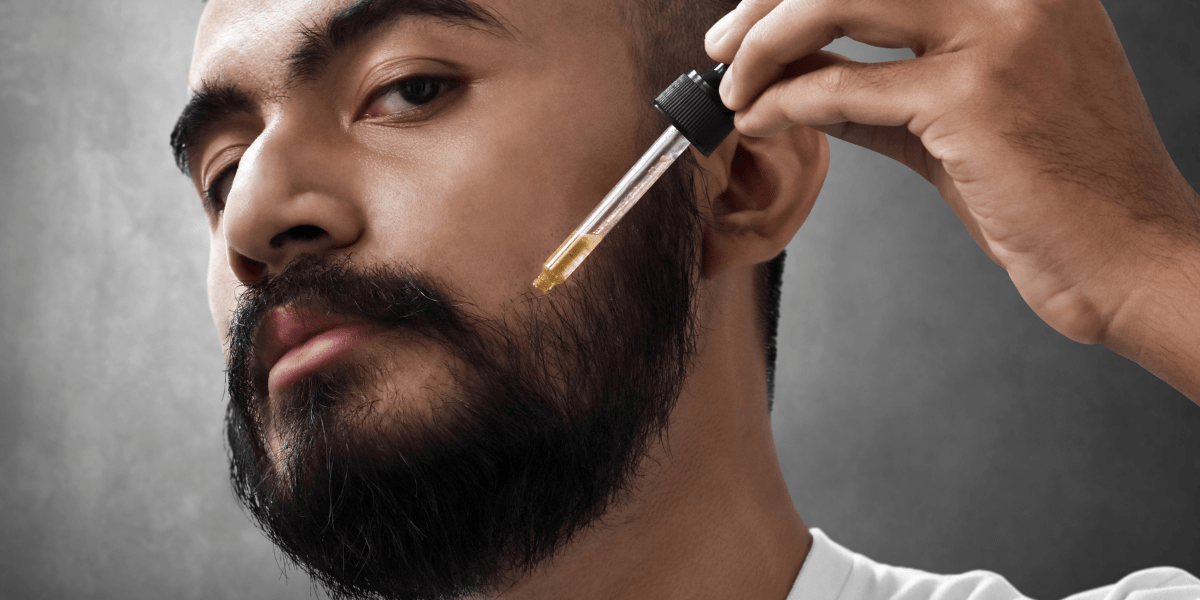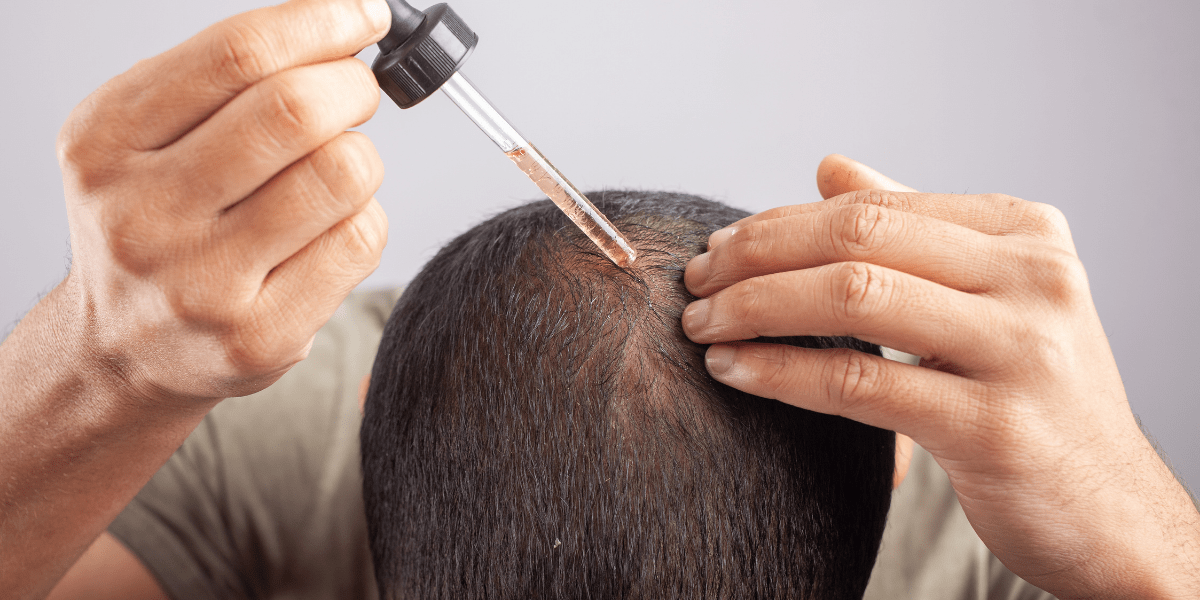Topical minoxidil is available over the counter and is used to treat hair loss. Minoxidil was initially developed to treat ulcers, but it was not effective. The Food and Drug Administration approved it as a blood pressure medication in the 1970s. About 20% of people taking oral minoxidil to control their blood pressure had increased hair growth (hypertrichosis), which led to developing minoxidil as a medication to treat hair loss.
Due to minoxidil’s side effects, the oral form of minoxidil was reserved for severe cases of high blood pressure that were resistant to other treatment options. Oral minoxidil has several black box warnings, which are the most serious warnings it issues. However, low-dose oral minoxidil has become more commonly used for patients who experience side effects from the topical form.1
In 1987, a topical form of minoxidil was approved to treat androgenic alopecia (male-pattern baldness) for men and was subsequently approved for women.2 Minoxidil and finasteride are the only two drugs that are currently approved to treat hair loss.
Topical minoxidil is available as a 2% or 5% solution or 5% foam and is sold under the brand name Rogaine. Minoxidil foam has several potential advantages because it does not contain propylene glycol (an irritant), it is easier to apply and control the spread of the medication, and it takes less time to dry after application.3 It may take two to four months to see the effects of minoxidil topical. You may notice hair loss before seeing hair growth.
Minoxidil is meant to treat male-pattern and female-pattern hair loss. However, it is used off-label to treat other forms of hair loss. It may not work for patchy hair loss, receding hairline, or hair loss as a side-effect of medications. Male-pattern hair loss typically begins with forehead hairline recession and hair thinning on the crown. Female-pattern hair loss is characterized by thinning over the crown without frontal recession.3
Table of Contents
How Does Minoxidil Work?
How minoxidil stimulates hair regrowth is not fully understood. Minoxidil is a vasodilator, which means that it widens blood vessels to increase blood flow. Theoretically, increased blood flow means more oxygen and nutrients for rapidly dividing hair follicles. Minoxidil also appears to stimulate the production of vascular endothelial growth factor, which could increase blood flow to hair follicles.4
In animal studies, minoxidil shortens telogen (resting phase), causing hair follicles to enter anagen (active phase of hair growth) prematurely. Minoxidil also prolongs the anagen growth phase and increases hair follicle size.5

What Are Minoxidil’s Side Effects?
Do not use minoxidil if your scalp is red, swollen, irritated, or infected. The most common side effects of topical minoxidil are largely skin related and include:
- Scalp itching
- Scalp scaling
- Excessive hair growth
- Changes in hair color or texture
According to drugs.com, the following serious side effects may occur:
- Severe scalp irritation
- Unwanted excessive facial hair growth
- Chest pain
- Fast heartbeat
- Swelling in the hands and feet
- Rapid weight gain from fluid retention
- Light-headedness
- Headache
- Dizziness
- Confusion
- Flushing
- Vision changes
Call your doctor if you experience severe or persistent symptoms or have symptoms of an allergic reaction. Symptoms of an allergic reaction may include shortness of breath, lip, tongue, or airway swelling, wheezing, coughing, or skin rashes, hives, or itching.
Use the recommended amount of minoxidil. Using more will not increase hair growth, and it may cause serious side effects.
Call your doctor if you notice any side effects.

Who Should Not Use Minoxidil?
Ask your doctor if it is safe to use minoxidil if you have a heart condition. Minoxidil is a pregnancy category C drug, meaning it is unknown whether minoxidil topical will harm an unborn baby. It is also not known if minoxidil passes into breast milk. If you are breastfeeding, do not use minoxidil solution without discussing it with your doctor.
Tell your doctor before using minoxidil topically, if you:
- Have a known allergy to the medication or any of its component
- Do not have a family member who has had hair loss
- Have hair loss that is sudden or patchy
- Are under the age of 18
- Have hair loss as a result of childbirth
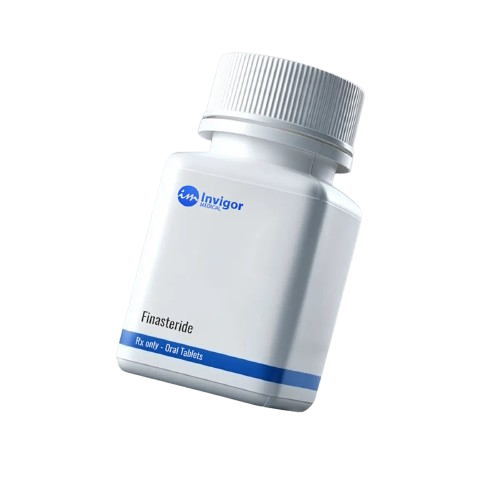
What Drugs Does Minoxidil Interact With?
Minoxidil is known to interact with the following medications:
- alfuzosin
- alprostadil
- ambrisentan
- amyl nitrite
- avanafil
- bosentan
- cyclandelate
- deserpidine
- doxazosin
- epoprostenol
- ethaverine
- guanadrel
- guanethidine
- hydralazine
- iloprost
- isosorbide
- isosorbide dinitrate
- isosorbide mononitrate
- isoxsuprine
- mecamylamine
- minoxidil
- nesiritide
- nitroglycerin
- papaverine
- prazosin
- rauwolfia serpentina
- reserpine
- sapropterin
- selexipag
- sildenafil
- silodosin
- tadalafil
- tamsulosin
- terazosin
- treprostinil
- vardenafil
- verteporfin
Is Minoxidil Hair Growth Permanent?
No, hair growth after using minoxidil is not permanent. If you stop using minoxidil, progressive hair loss will occur within 12 to 24 weeks.

Is Minoxidil Safe?
Several randomized, controlled clinical trials have investigated the safety and effectiveness of minoxidil.
Male-pattern Baldness Studies
A 2-year trial enrolled 300 participants. Half used a 2% minoxidil solution, and the other half used a 5% minoxidil solution. The most common side effects were scalp itching and headaches.
Another trial enrolled 180 participants. They used 5% minoxidil foam for 16 weeks. The most common side effects were scalp redness, dryness, and scaling. About 1% of participants also experienced folliculitis, an inflammation of the hair follicle.
A 26-week study enrolled 100 participants and compared the use of a 5% minoxidil solution with a placebo shampoo. The most common side effects were local irritation.
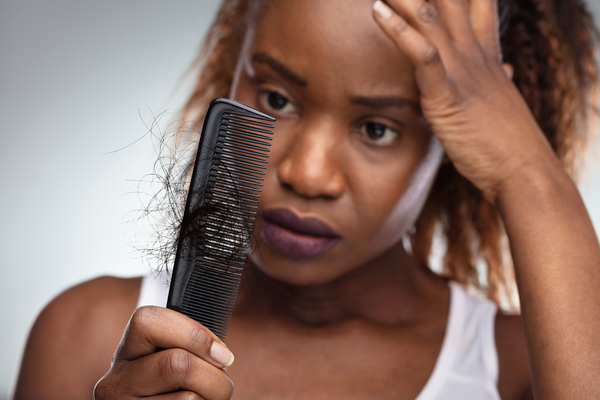
Female-pattern Baldness Studies
A two-year trial that enrolled over two hundred participants compared 2% and 5% minoxidil against a placebo. The most common side effects were headaches and itching. Users of the 5% solution also experienced hypertrichosis (excess hair growth).
A 24-week trial enrolled 240 participants and compared a 1% minoxidil solution with a placebo. Side effects were not available.
A 24-week trial enrolled 100 participants and compared 5% minoxidil foam with a 2% minoxidil solution.
Side effects of the 5% minoxidil foam included:3
- Facial excessive hair growth (33%)
- Hair shedding (12.5%)
- Itching (8.9%)
- Skin irritation (3.6%)
- Headache (3.6%)
- Nausea and breathlessness (1.8%)
- Fast heartbeat (1.8%)
- Rash (1.8%)
Side effects for the 2% minoxidil solution included:3
- Facial excessive hair growth (51%)
- Hair shedding (17.5%)
- Headache (7%)
- Fast heartbeat (3.5%)
- Ear swelling (1.8%)
- Skin rash (1.8%)
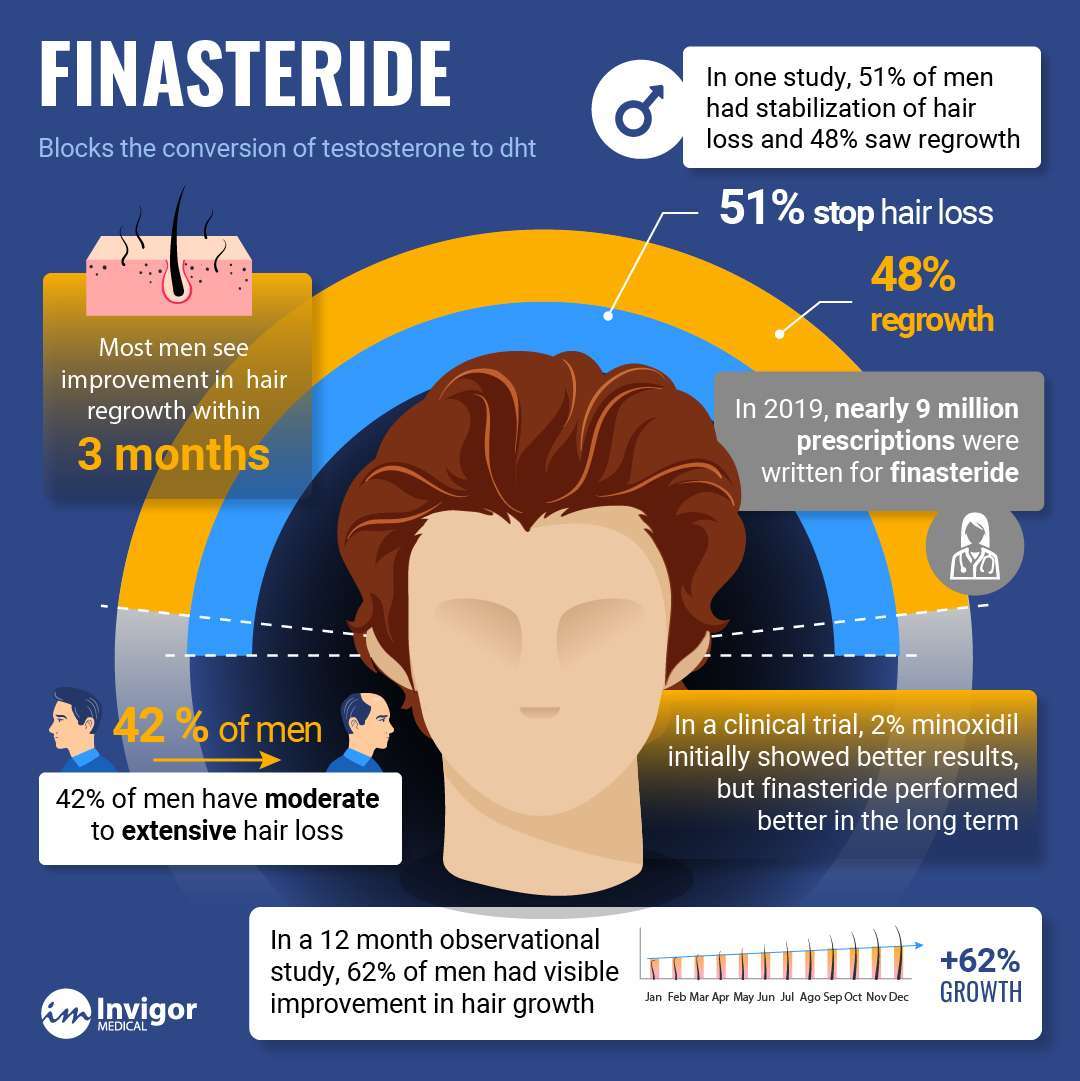
What Are The Alternatives To Minoxidil?
Finasteride is the only other approved medication used to treat hair loss. Finasteride is a competitive inhibitor of Type II 5α-reductase. This means it inhibits the enzyme Type II 5α-reductase and decreases its ability to convert testosterone to DHT. By blocking Type II 5α-reductase, the conversion of testosterone to DHT is reduced by up to two-thirds.
In people with a genetic predisposition, DHT shortens the growth phase of the hair from years to weeks or months and decreases the size of the hair follicle. The shortened growth phase results in hair that goes into a resting phase more quickly and falls out—the smaller hair follicle results in thinner, less coarse hair. In a literature review, researchers found that finasteride produced hair growth in up to 66% of men with mild-to-moderate hair loss and stopped hair loss in 91% of men.6 In order to buy finasteride, head over to Invigor Medical.

